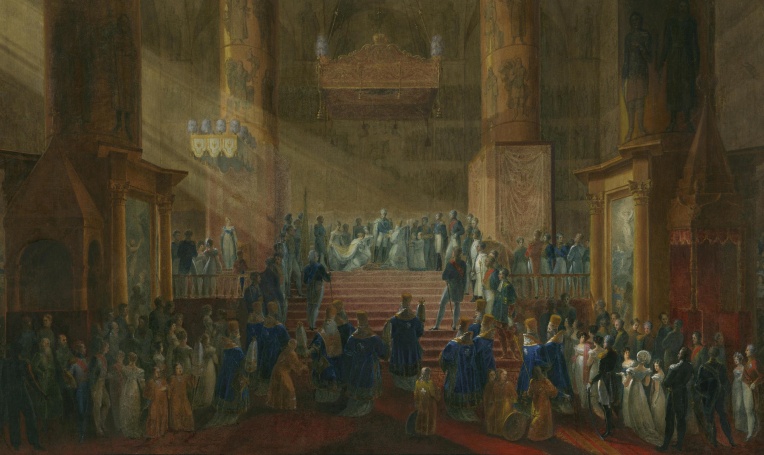
In 1825, Tsar Alexander I (1777-1825) died without any legitimate offspring, leaving the Russian throne to Tsar Nicholas I (1796-1855), next in the line of succession after Grand Duke Konstantin Pavlovich (1779-1831), who had renounced his right to rule in 1822. The coronation of Nicholas I and his consort, Empress Alexandra Feodorovna (1798-1860), took place on September 3 (August 22, Old Style), 1826 at the Assumption Cathedral of the Moscow Kremlin.
Figure 7.1. Artist unknown (Russian), Koronatsiya Nikolaya I v Uspenskom sobore v Moskve, first half of the 19th century, gouache on paper, 70.5 x 116 cm, The State Hermitage Museum, St. Petersburg, ЭРР-1028, source: Hermitage.
Empress Alexandra Feodorovna’s coronation ensemble
The dress
On the face of things, Alexandra Feodorovna’s coronation outfit is modelled on the European fashions prevailing in the mid-1820s. It consists of a décolleté gown with a pleated neckline, puffed sleeves, a waistline at the natural level and a padded hemline that causes the skirt to hang stiffly above the floor. The stylish skirt features horizontal bands of rich embroidery that reach up to the knee; the motifs, picked out in silver metal thread, also have three-dimensional effects, which were then in vogue (see figure 7.3).

The ensemble, however, also features an over-dress, which gives Alexandra Feodorovna’s outfit its Russian appearance. The over-dress is sleeveless, allowing the sleeves of the evening gown worn underneath to remain visible. When viewed from the back (figure 7.4), the over-dress clearly has a pair of very long, narrow false sleeves sewn at the top of the shoulders that would have hung loose down the back of the ensemble in the true Russian style.
As figures 7.3 and 7.4 show, the curators at the Moscow Kremlin Museums, where the ensemble is currently housed, elected to instead cross the false sleeves across the back of the outer garment, bring the two ends forward and tie them together like a sash. This alternate means of presentation might serve two purposes: firstly, this improvised belt helps create a waistline, and secondly, it holds the outer dress and under-dress together. Given the absence of an actual belt that may have been worn by Alexandra Feodorovna with her coronation garments, the museum curators’ decision to use the false sleeves as a sash might have been the best solution.
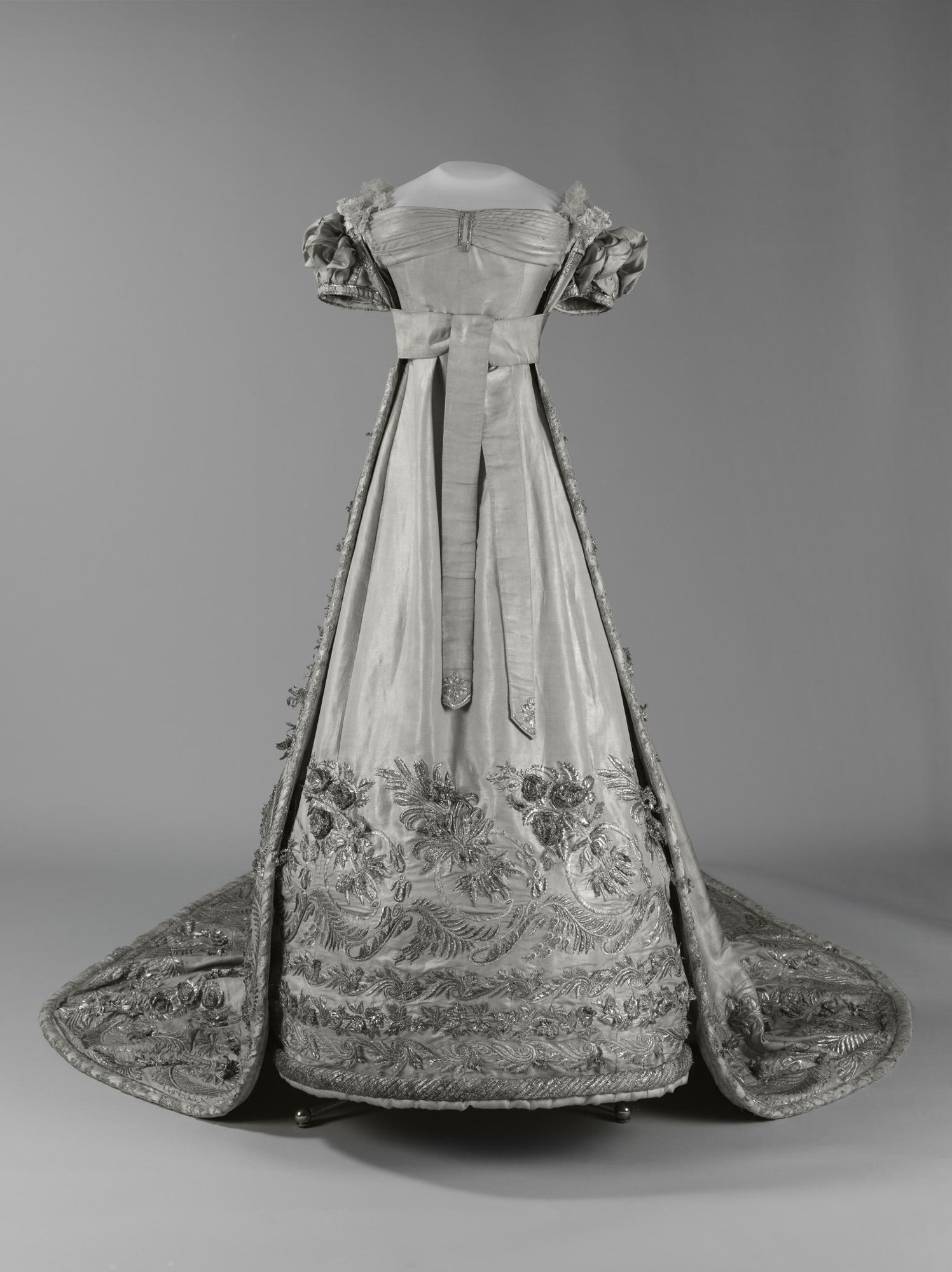
A comparison of figure 7.3 with Dawe’s portrait of Alexandra Feodorovna (figure 7.2) indicates that she would have worn the outer dress in the traditional Russian manner, that is, with the false sleeves suspended from her shoulders. In all probability she would have worn a belt, as all fashionable western European dresses of the era had a belt to demarcate the waistline. The over-garment would have been secured by means of pins to the sides of the bodice underneath; however, the over-dress would have hung free from the waist to the floor, thanks to the sheer weight of its lengthy, squared-off train, which also has a heavily embroidered border and a padded hem.
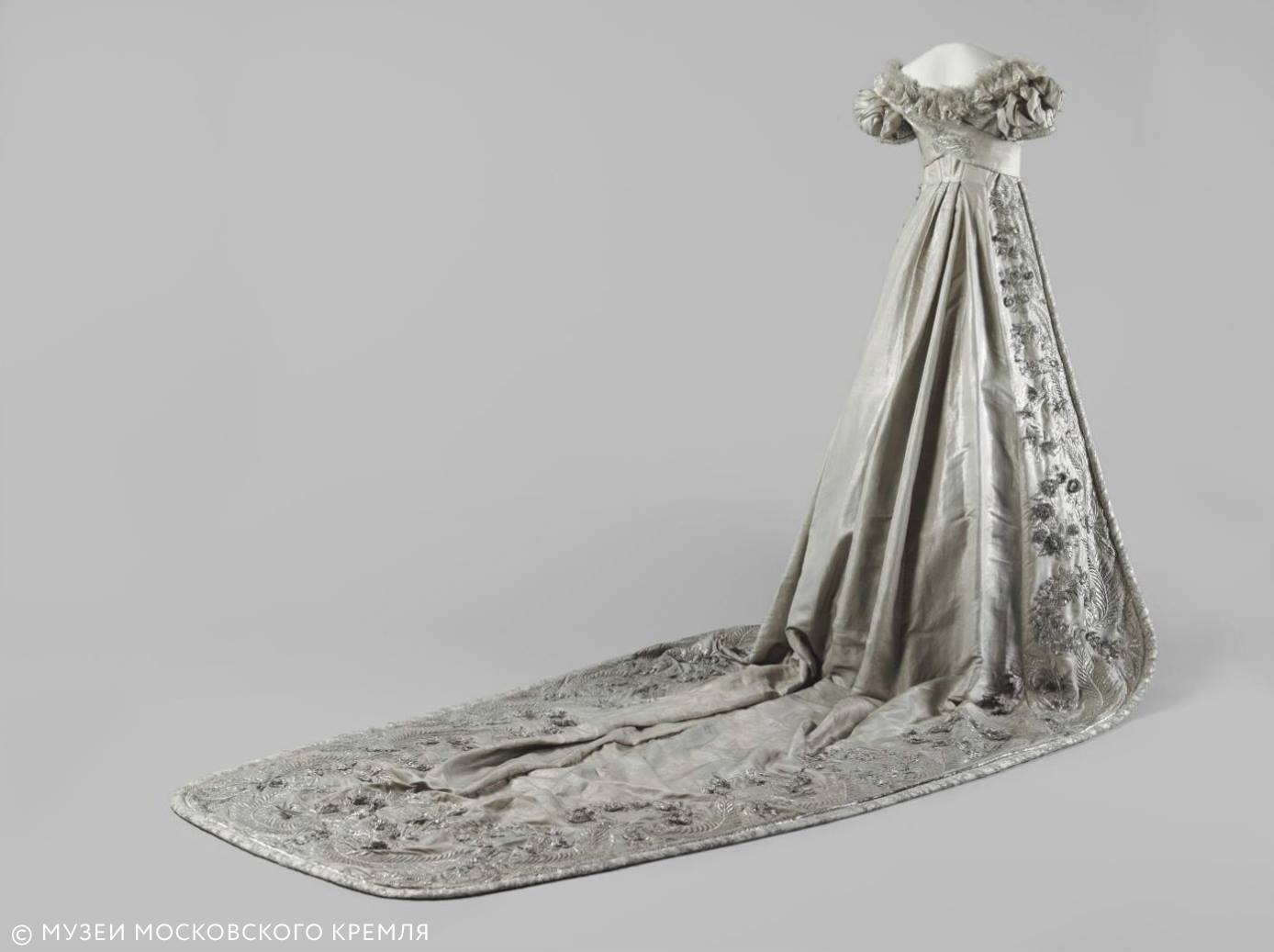
The shoes
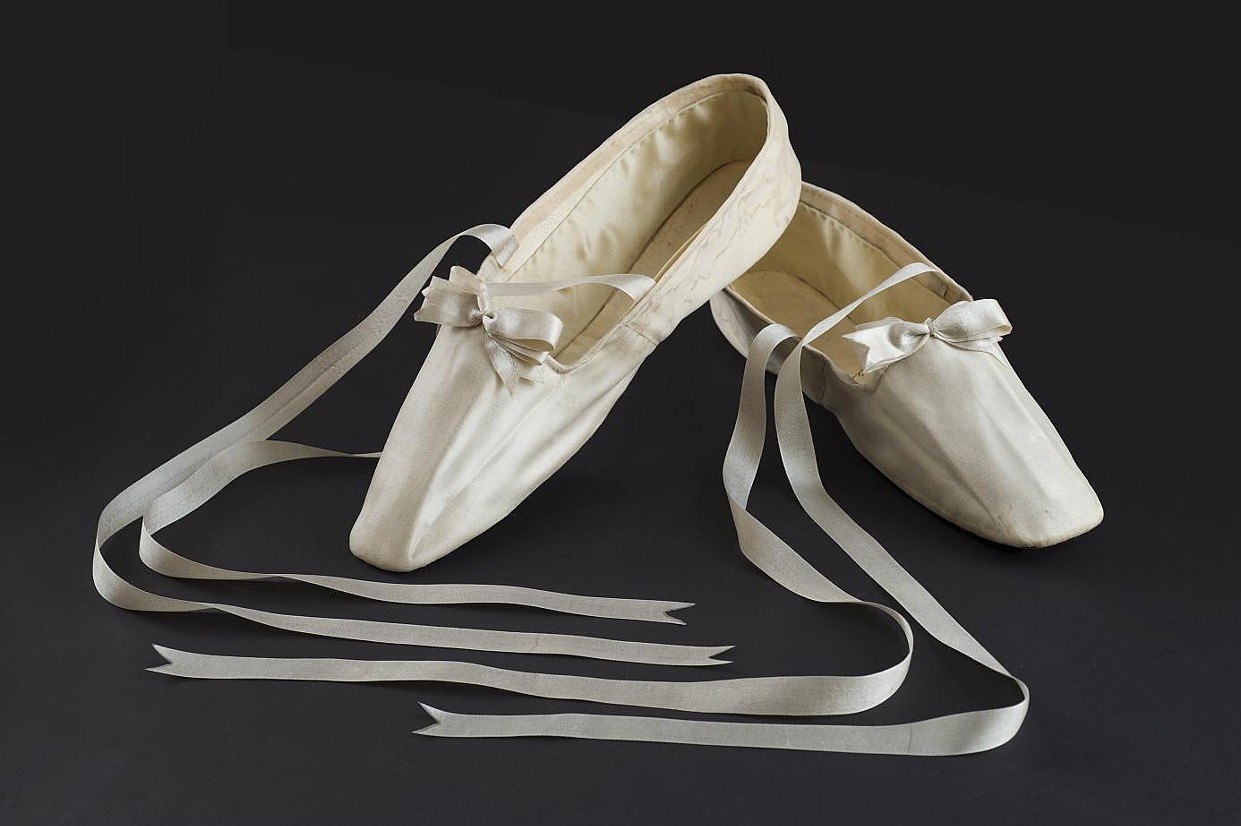
Empress Maria Feodorovna’s court dress
According to the Gatchina Palace museum, Dowager Empress Maria Feodorovna, Alexandra Feodorovna’s mother-in-law, attended the 1826 coronation wearing a court dress that now resides in its collection (figures 7.6 and 7.7). Like Alexandra Feodorovna’s coronation garments, Maria Feodorovna’s court ensemble consists of a European-style ball gown and an over-dress having a pair of long, folded-back false sleeves that are attached at the shoulders and an integrated train that terminates in a squared-off shape.
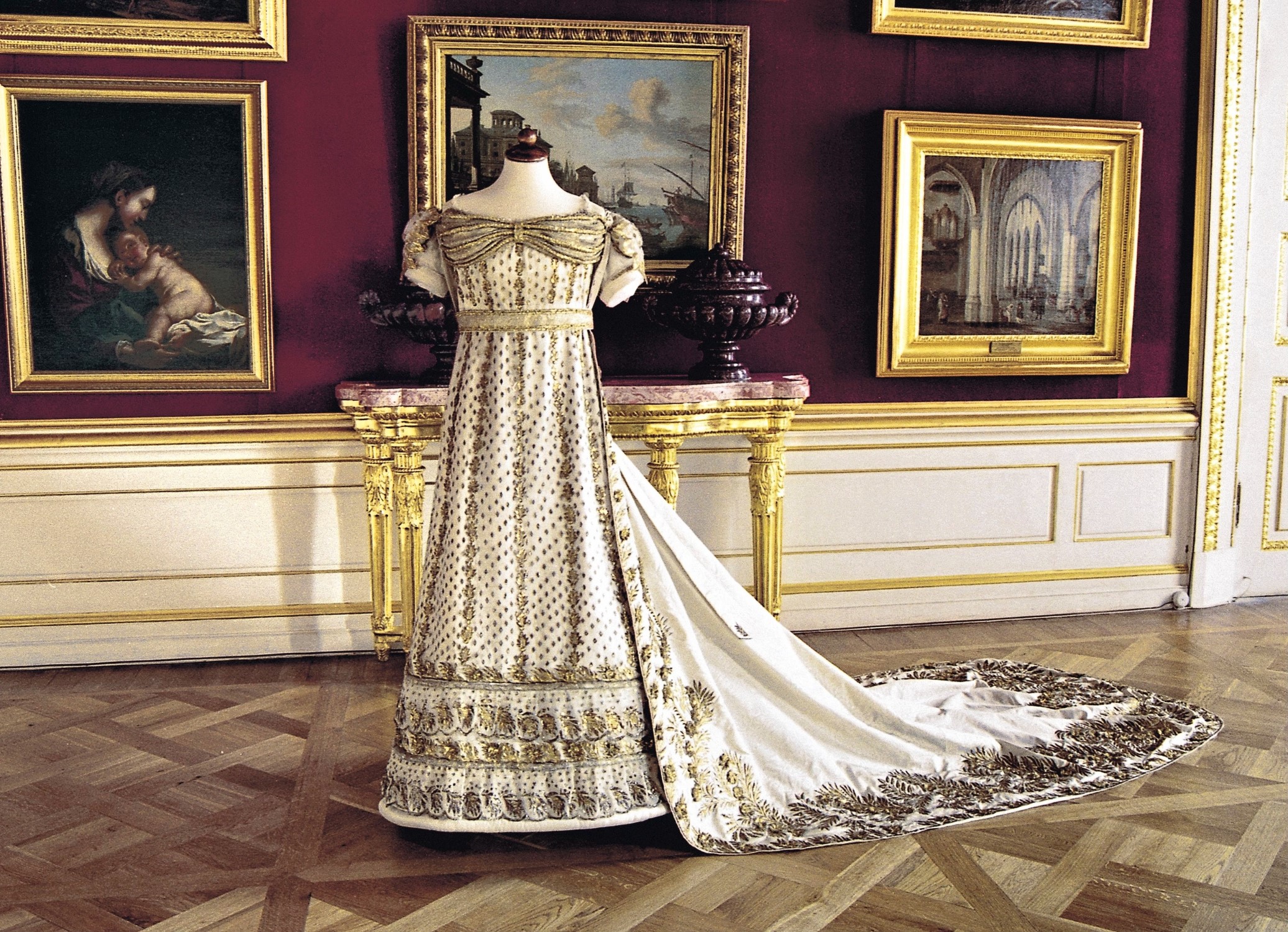
While there are abundant similarities between the cut and style of the two women’s outfits, the most prominent differences lie in the textiles that have been used. Cloth-of-silver was the material of choice for a new Russian Empress to wear on the occasion of her coronation; court protocol dictated that her mother-in-law (the Dowager Empress) and other ladies should wear fabrics of lesser value, as they were secondary to her in status. Maria Feodorovna’s court ensemble is therefore of silk moiré, a cheaper fabric than cloth-of-silver; however, the lavish embroideries on her ball gown have been executed in gold metal thread on thin silk tulle, a feat that represents the triumph of the embroiderer’s craft. The embroiderers, said to have been serf seamstresses at the Gatchina Palace estate, used goldwork to delineate the folds of Maria Feodorovna’s pleated bodice, to embellish the delicate sleeve caps, which sit like insect wings atop her puffed sleeves, and to create three tiers of foliate motifs above the padded hem of her skirt.
Unlike Alexandra Feodorovna’s ensemble, Maria Feodorovna’s outfit comes with a matching belt, which cinches the waist at its natural height and also helps secure the over-dress to the ball gown worn underneath. In accordance with the ethnic Russian style, the folded-back sleeves of the outer garment are left to dangle down its back (see figure 7.7).
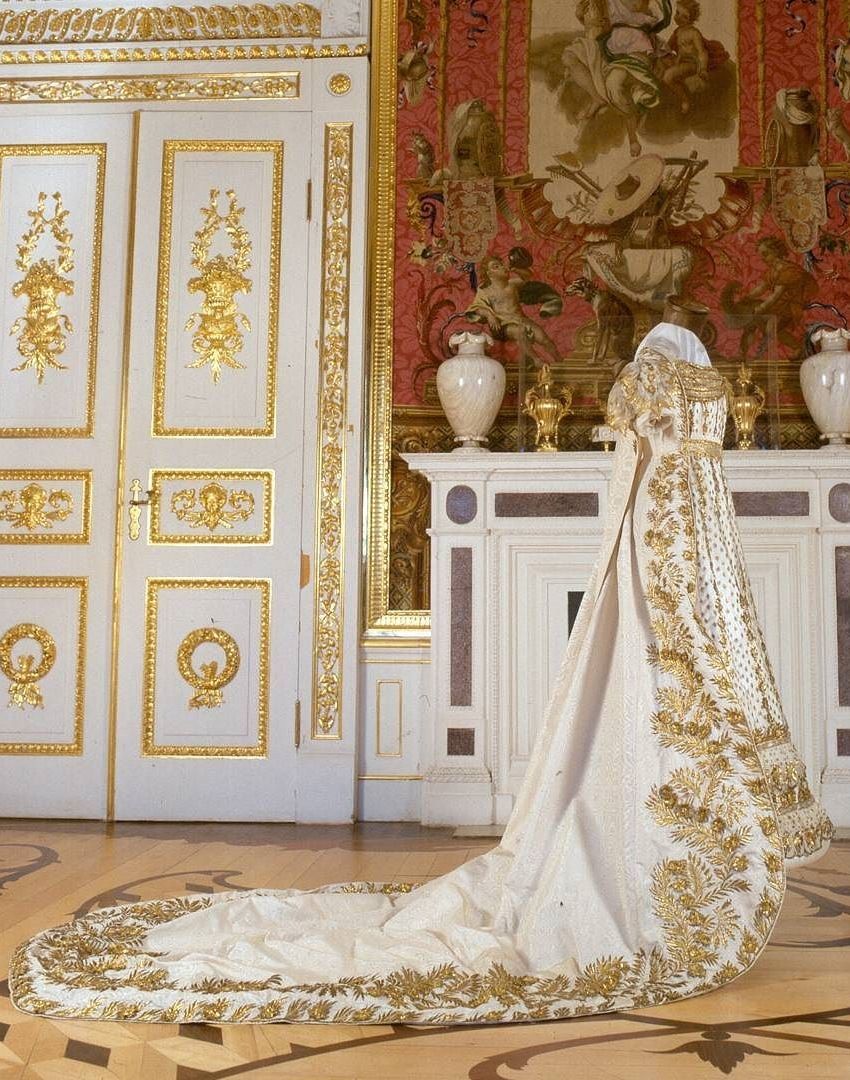
Some years later, in 1834, Tsar Nicholas I would issue a decree regulating court dress, which required the Empress, female members of the Imperial family and women courtiers to wear a court uniform that was modelled on ethnic Russian garments, as well as a kokoshnik, a traditional Russian headdress. Nicholas I’s edict, which remained in place until the collapse of the Russian Empire in 1917, ensured that the colour and type of fabric, trim, even embroidery motifs, used for these so-called uniforms would help the viewer identify the wearer’s rank at court. In other respects, the dresses were virtually identical, for they had the same cut, construction and silhouette. The court dresses that Alexandra Feodorovna and Maria Feodorovna wore for the 1826 coronation seem to have been the first step in the evolution of the national court costume envisioned by Nicholas I.
Bibliography
Efimova, L., T. Korshunova and L. Efremova. Introduction to History of Russian Costume from the Eleventh to the Twentieth Century, by T.S. Alyoshina, I.I. Vishnevskaya, L.V. Efimova, T.T. Korshunova, V.A. Malm, E.Yu. Moiseenko, M.M. Postnokova-Loseva and E.P. Chernukha. New York: Metropolitan Museum of Art, 1977. Published following the exhibition Glory of Russian Costume at the Metropolitan Museum of Art, New York. MetPublications.
Franklin, Harper. “1820-1829.” Fashion History Timeline, last updated August 18, 2020. https://fashionhistory.fitnyc.edu/1820-1829/#.
Gatchina Palace and Estate Museum. “A Dress of Empress Maria Feodorovna (the Wife of Paul I) – Russia.” Google Arts & Culture, accessed March 3, 2022. https://artsandculture.google.com/asset/a-dress-of-empress-maria-feodorovna-the-wife-of-paul-i-russia/uwGm9Hq1M4R40Q.